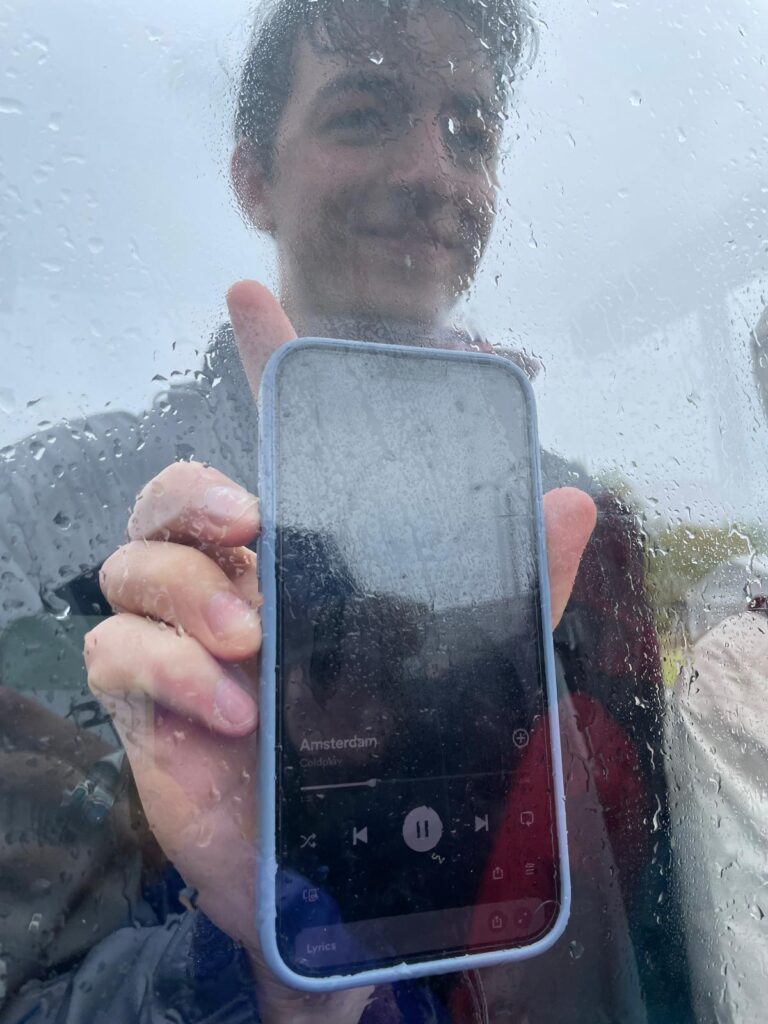June 10, 2024
Today was our first real rainy day in the Netherlands. We decided the train was the best idea with the rain and our 5 flat tires over the past few days, so we hopped into our raincoats and rain pants and headed to the train station. After the train, and a short bus ride and walk, we made it to the Technical University (TU) Delft Green Village.
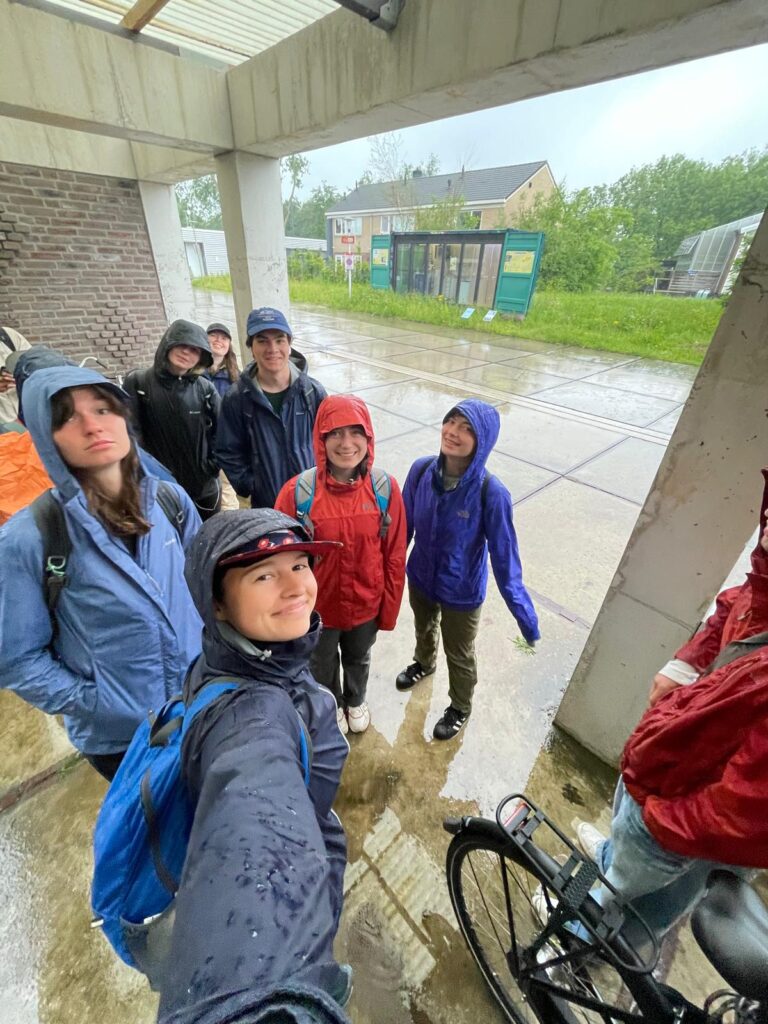
Once there, our TU Delft instructor, Lindsey, gave us a presentation and overview of the Netherlands’ flood defense system. She also helped us delve deeper into the question of when do we come to the point of stopping building higher and stronger dikes or storm barriers, and when do we need to be more dynamic with nature — building with nature and using nature-based solutions. We also talked about the 2021 floods that were impacted by climate change and the importance of organization during crisis in flooding. Lindsey was amazing and down to earth and was the highlight of many of our days, having an amazing outlook on our environment and society.
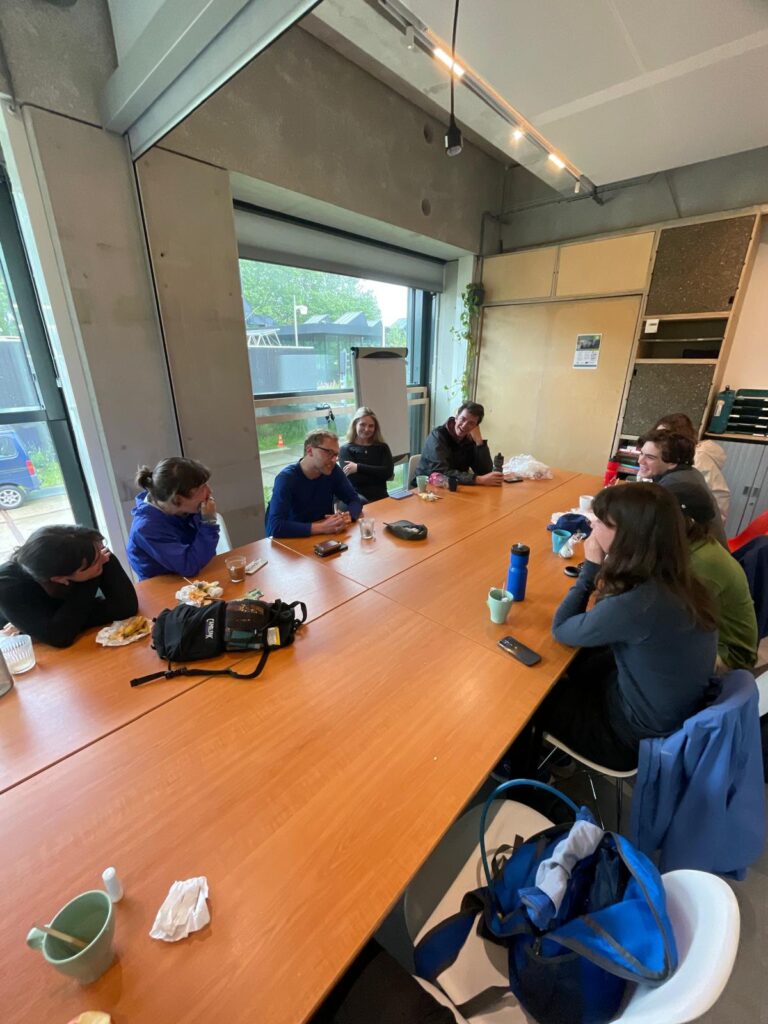
The Green Village was built on the spot of the old architecture building that burnt down. It is a space without as many regulations as other areas of the country. This allows it to be used for innovation and development. There are 12 residents that live in the village along with the research facilities and laboratories. It helps to have regular people live there to see how these innovative solutions for sustainable living could be used on a bigger scale eventually. Those who live in the village cook using hydrogen rather than natural gas, which is really cool. Their washing water is also sourced from rainwater. They have many sensors for monitoring various sustainability installations (such as pervious pavers).
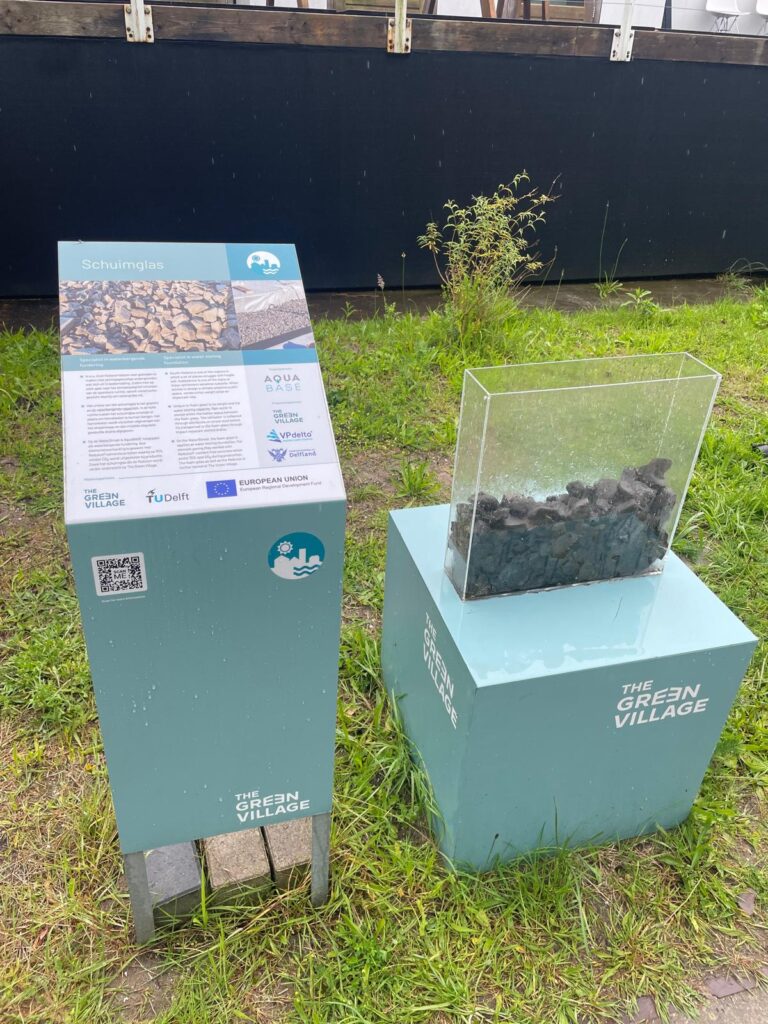
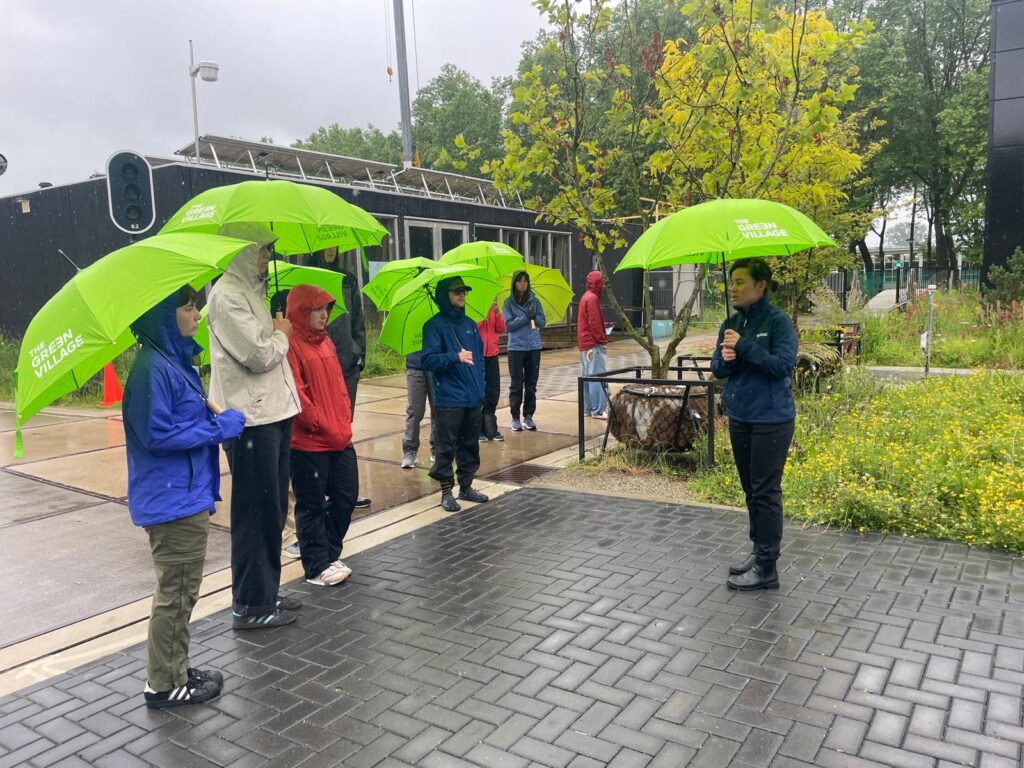
The next place we visited was Flood Proof Holland. We took the bus and walked to this field experiment site at the southern end of the TU Delft campus.
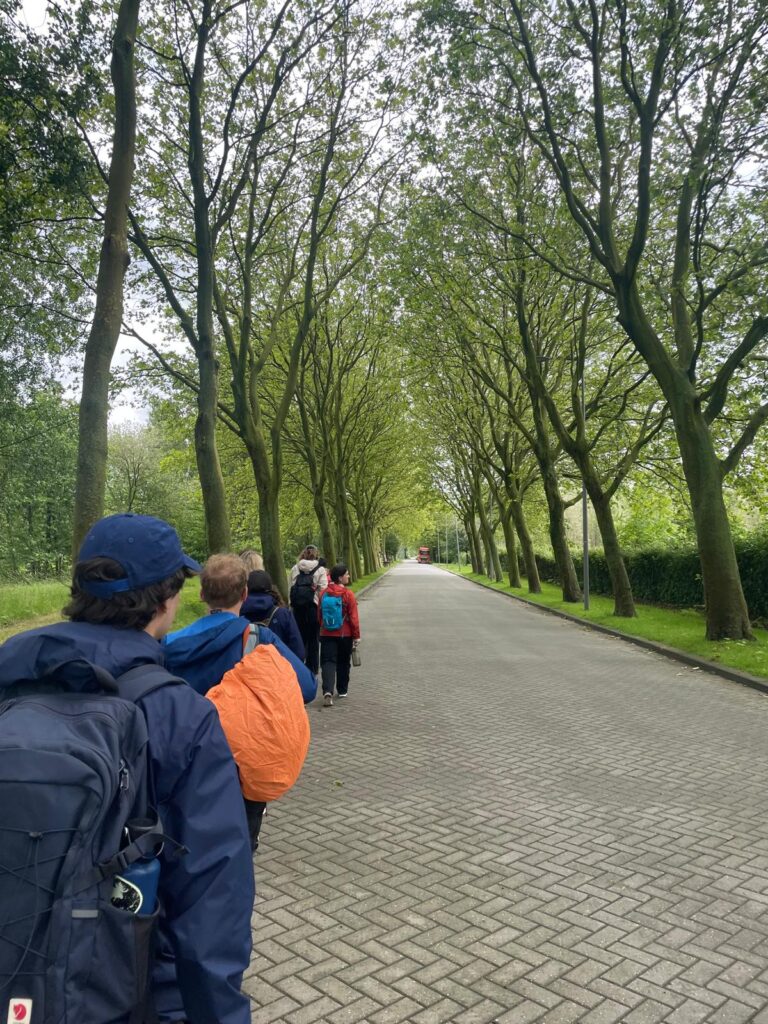
Once there, we saw options for flood control including box barriers that can be filled with water, tube barriers (very hungry caterpillar looking thing) among others. TU Delft researcher, Jean Paul, described that they have experimented with destroying dikes to where they are on their 12th experimental dike. They saturate their experimental dike and can watch the water table shift and observe how various manipulations they make to the dike influence its stability and ability to hold back water.
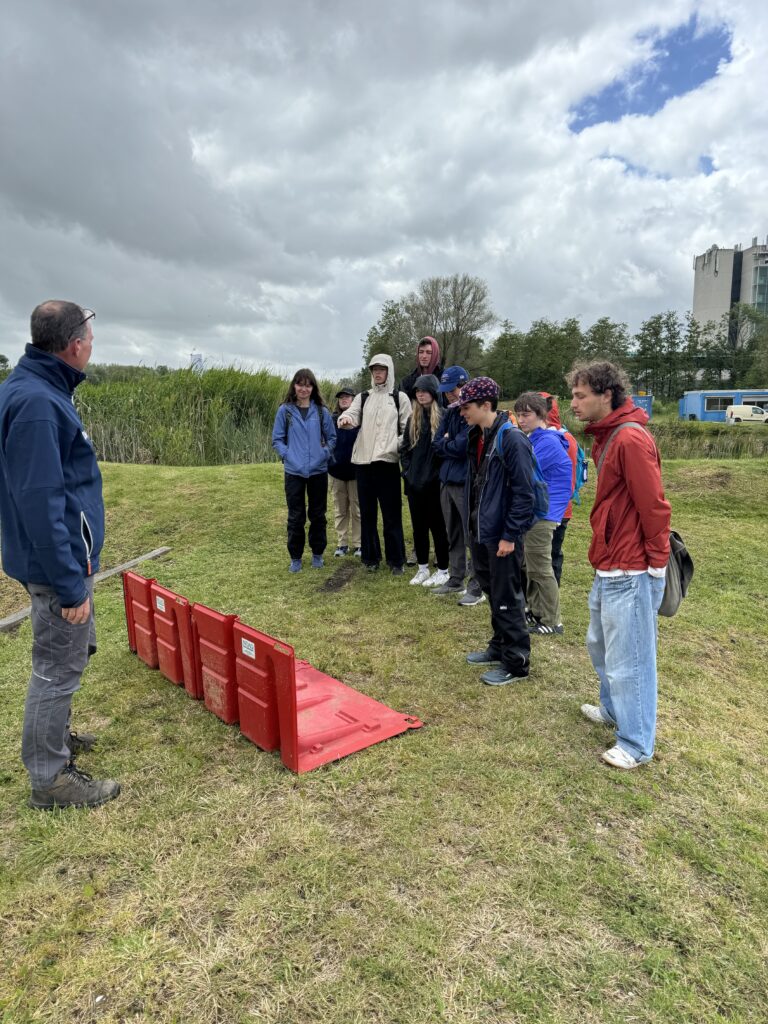
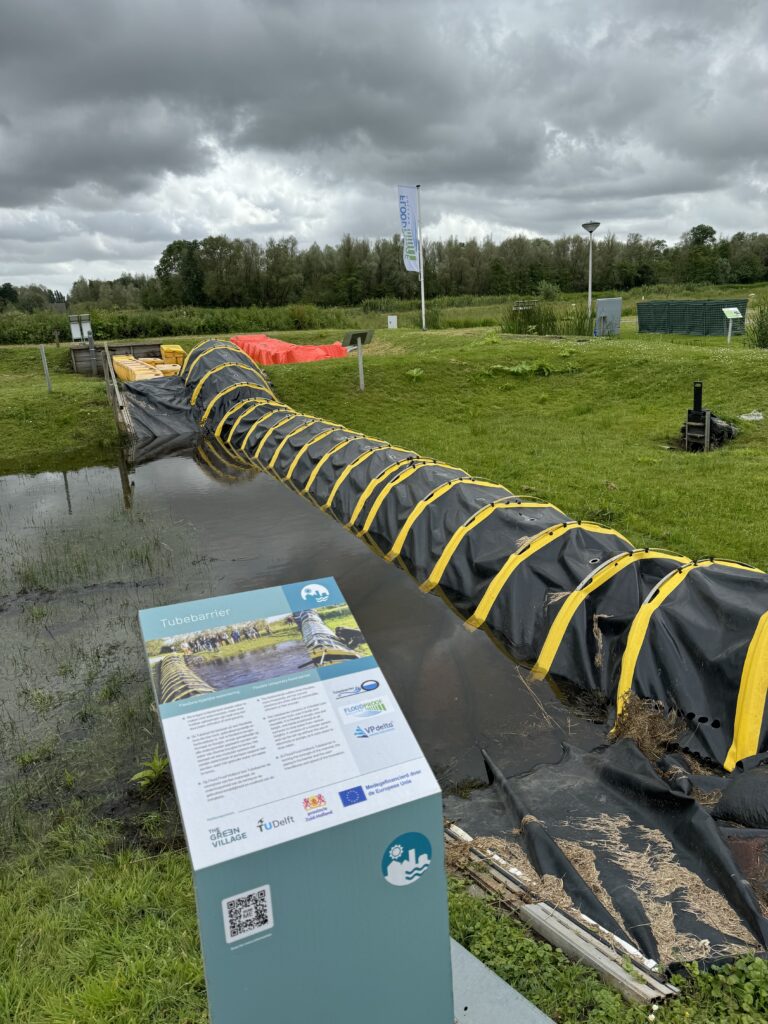
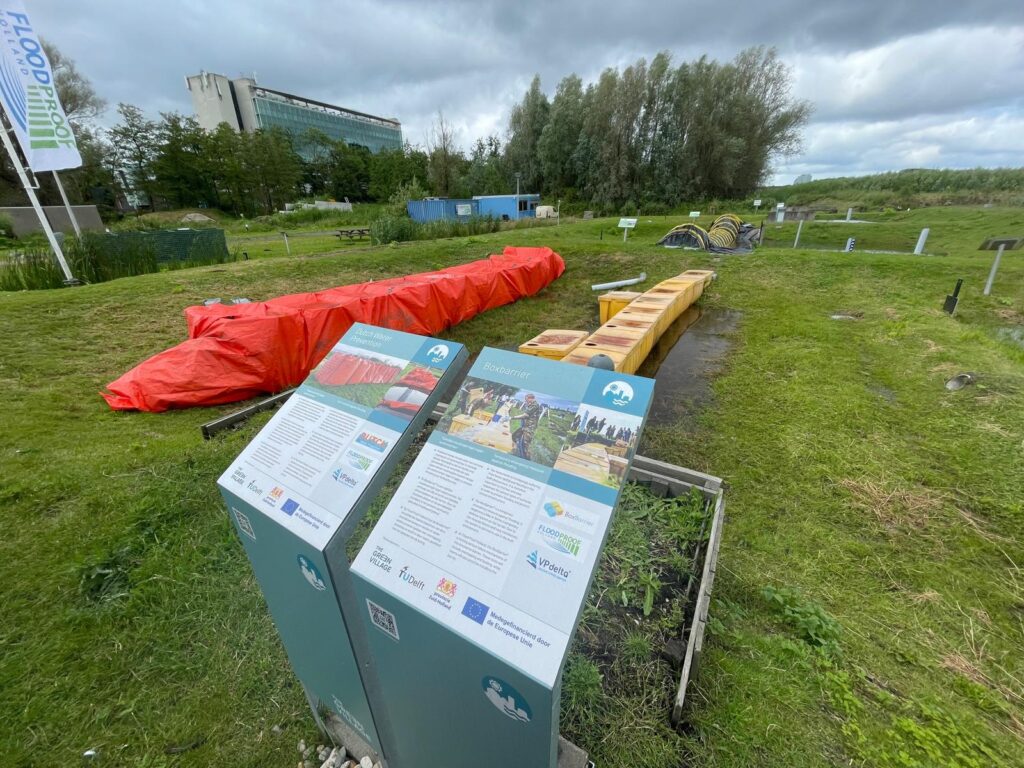
In these labs, they have also sunk electric cars and brought in the fire department to learn during these experiments. We talked about flood deaths in cars, specifically in electric cars. As the Netherlands has so many canals and waterways, understanding how systems in electric cars are affected by being submerged is important.
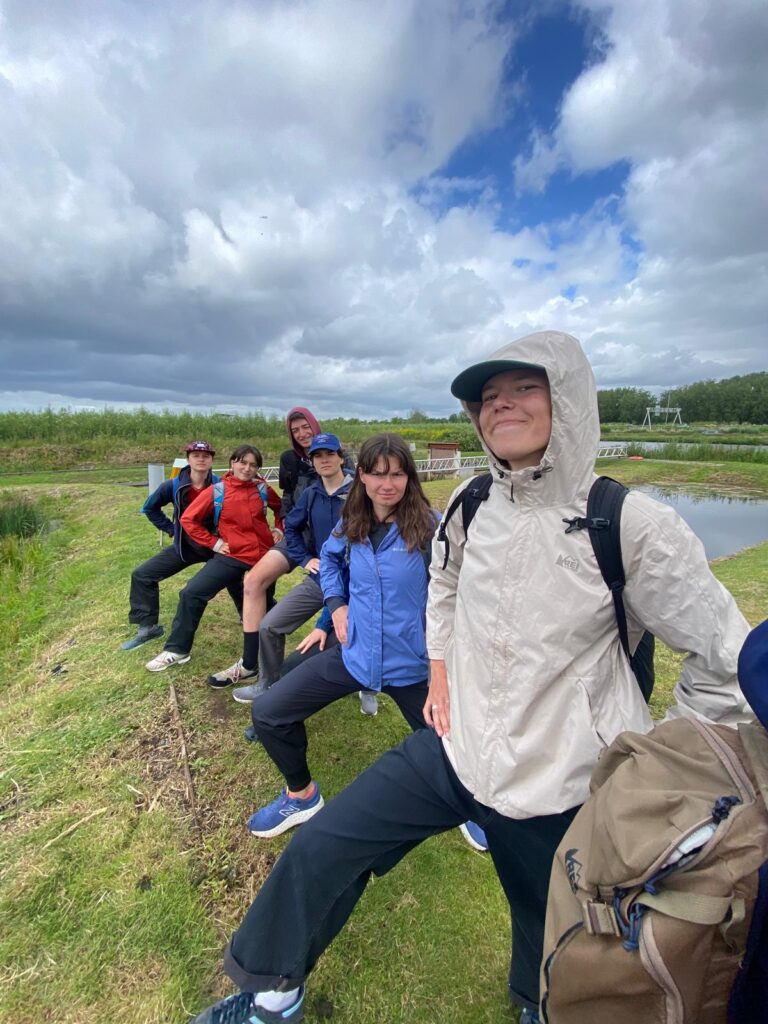
Some US delegates were getting a tour of the dike experiments the same afternoon as us, so we were able to watch the demonstration of various flood barriers with them. The US delegates were mostly from flood-prone Southern US states. We got to watch the demonstrations of the different barriers, the box barrier, the waterschot, and the NoFlood. It was really amazing to see these in action.
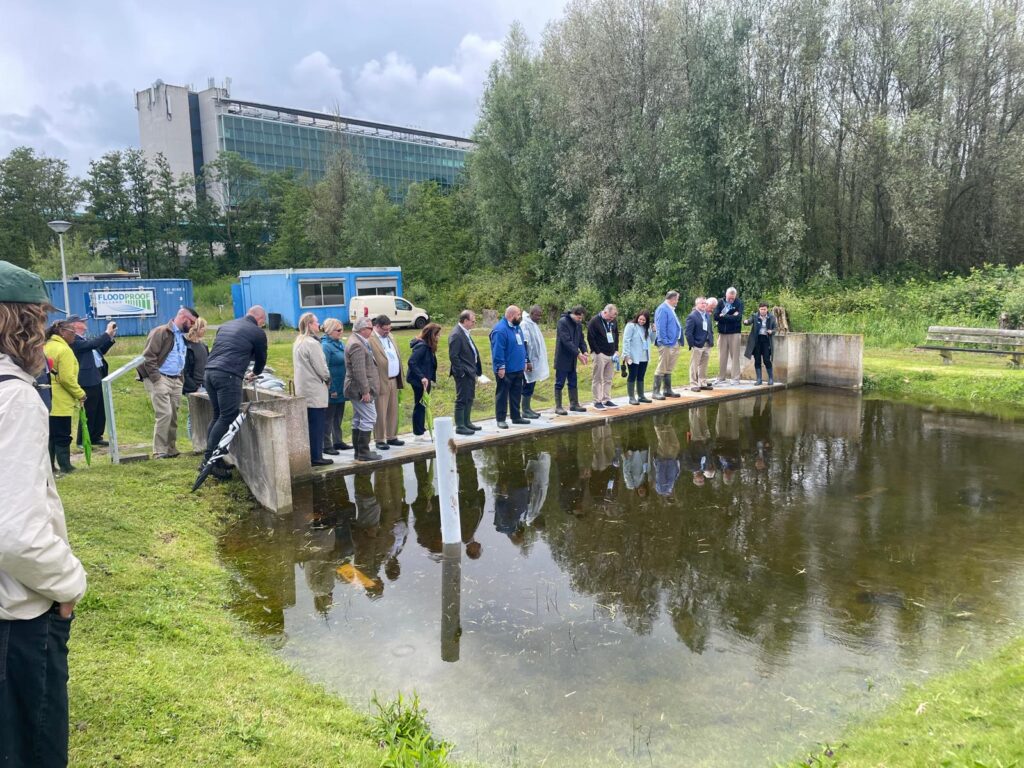
After our Floodproof Holland tour, we got stuck in some wild rain, escaped into a restaurant, and had some amazing hot chocolate.

Next, after a wait for the bus in the rain, we got to spend time with TU Delft engineering students in their student lounge. We had a blast talking to them about everything from water management to grad school to how crazy we are to be biking so far (we aren’t crazy).
To my family, I miss you and will see you so so soon.
